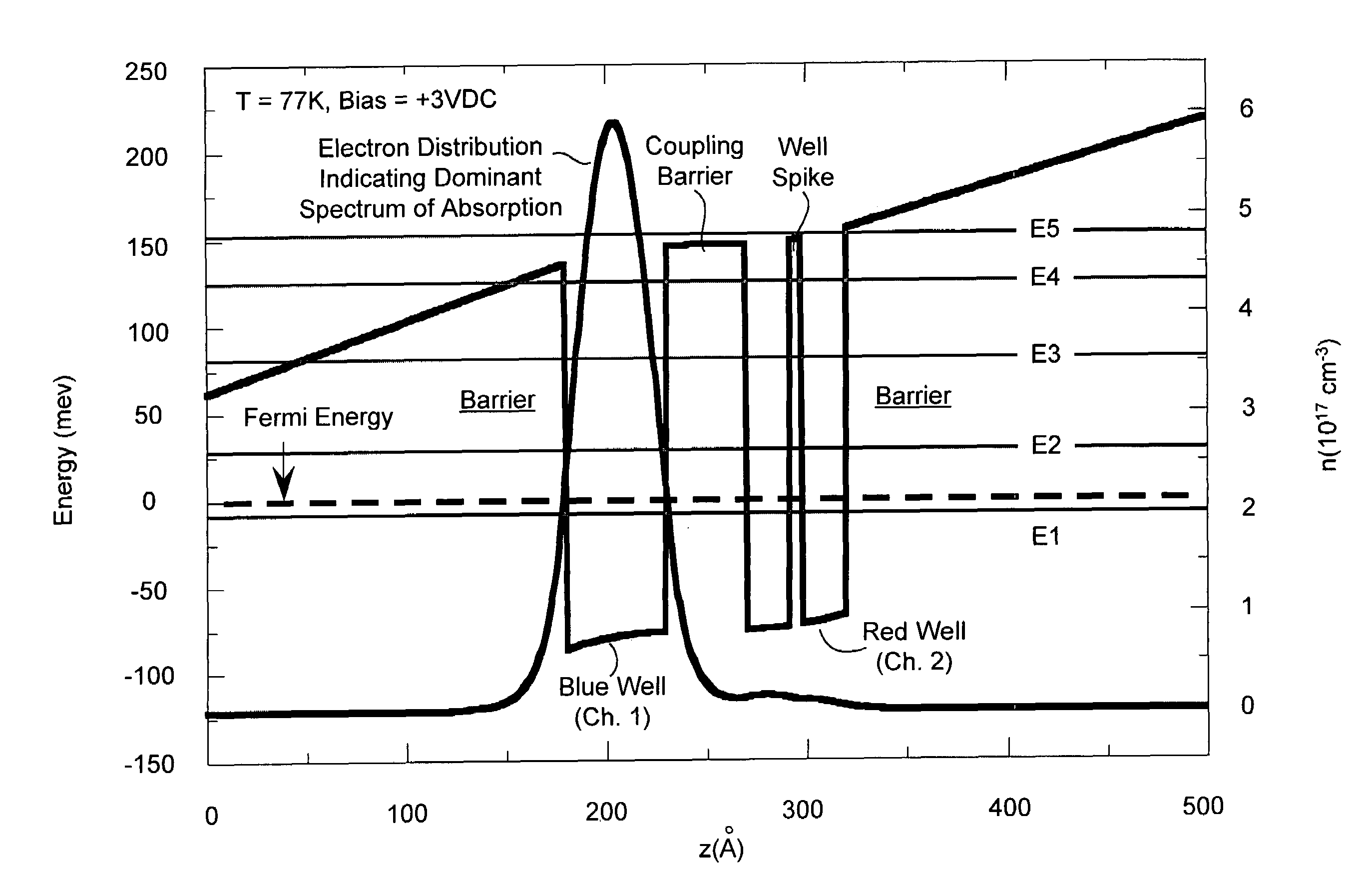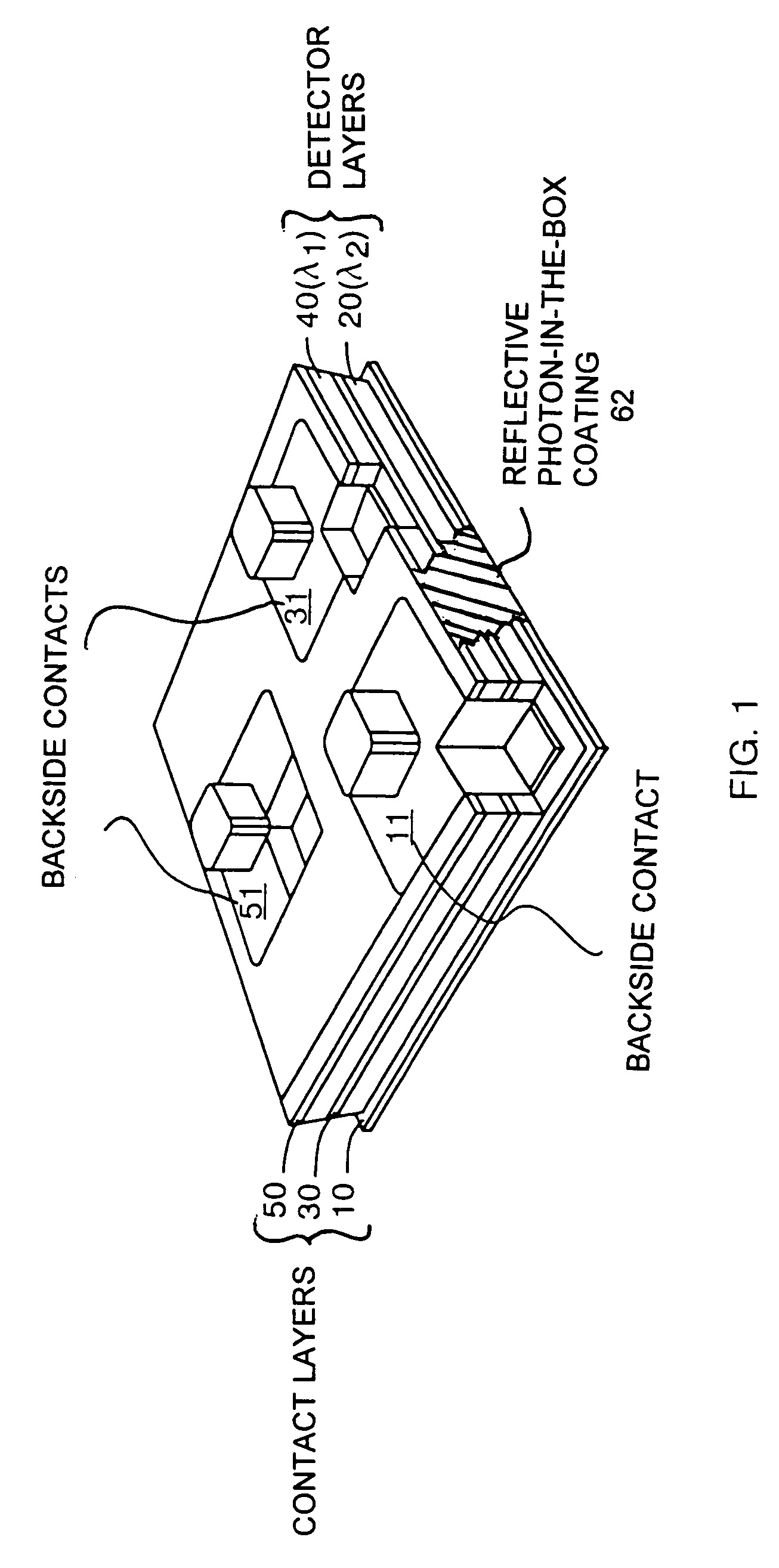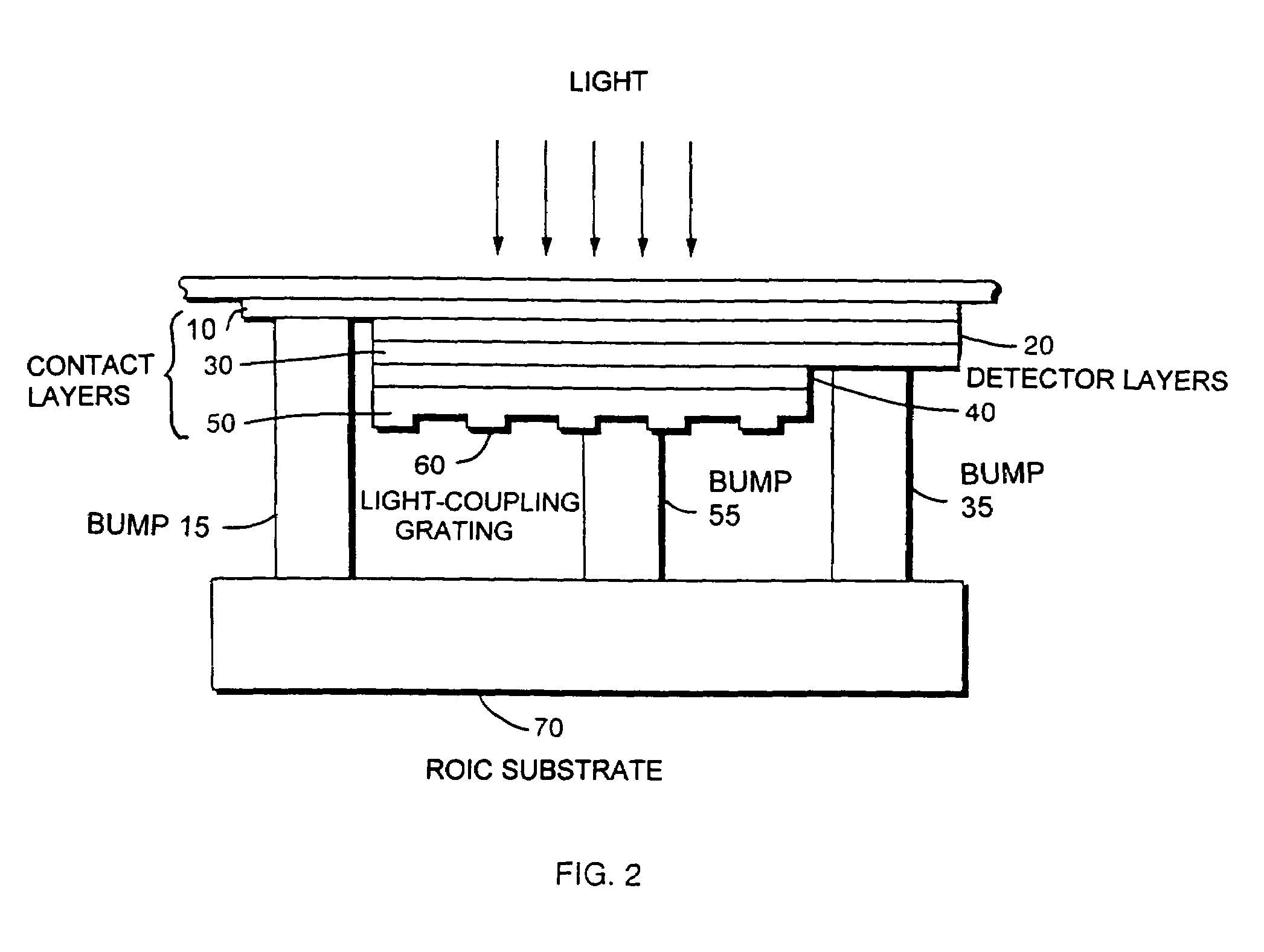QWIP with tunable spectral response
a spectral response and spectral response technology, applied in the field of tunable qwip focal plane array, can solve the problem that there is no device capable of performing the like of target imaging at the fpa level, and achieve the effect of effective operation and facilitation of absorption
- Summary
- Abstract
- Description
- Claims
- Application Information
AI Technical Summary
Benefits of technology
Problems solved by technology
Method used
Image
Examples
Embodiment Construction
[0026]Embodiments of the present invention provide a tunable QWIP FPA device that is configured for multi-modal and spectral tunability for performing the likes of imaging and spectroscopy. A selected bias voltage is applied across the contacts associated with a particular detector layer or “channel” of the device, where each applied bias corresponds to a particular target spectrum for detection. Each detector layer has a spectral response that can be coarse tuned for a bimodal or dual-band operation (e.g., MW / LW). Also, each detector layer is configured for continuous or fine tuning within a particular mode (e.g., MW / MW). Thus, dynamic bias-controlled tuning is enabled.
[0027]The tunable QWIP FPA can be fabricated as a multifocal plane imaging device using conventional epitaxial growth techniques on a substrate. Back side contacts can be used to enable direct, discrete, pixel to ROIC connection and direct current readout for each detected wavelength (i.e., per channel). Each detecto...
PUM
 Login to View More
Login to View More Abstract
Description
Claims
Application Information
 Login to View More
Login to View More - R&D
- Intellectual Property
- Life Sciences
- Materials
- Tech Scout
- Unparalleled Data Quality
- Higher Quality Content
- 60% Fewer Hallucinations
Browse by: Latest US Patents, China's latest patents, Technical Efficacy Thesaurus, Application Domain, Technology Topic, Popular Technical Reports.
© 2025 PatSnap. All rights reserved.Legal|Privacy policy|Modern Slavery Act Transparency Statement|Sitemap|About US| Contact US: help@patsnap.com



